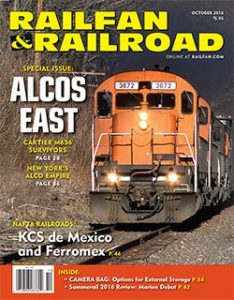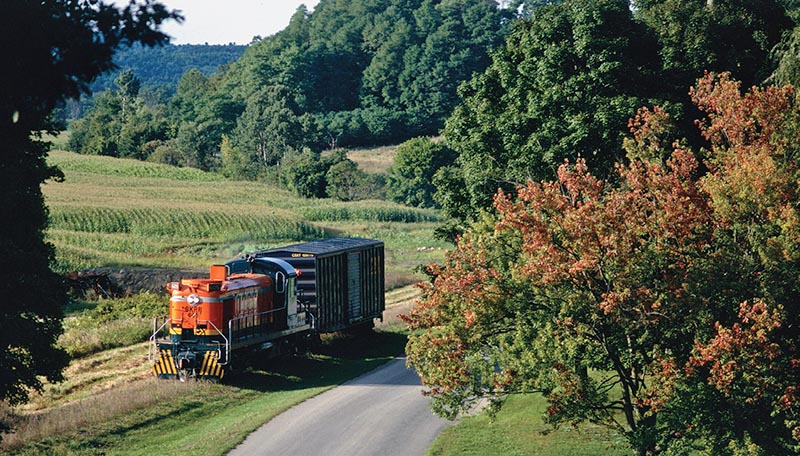 To be a railfan is to be part of a small group. Nobody knows exactly how many there are; the best “guesstimates” indicate there are about 100,000 to 200,000 in the U.S. One might assume that such a small group would be tight-knit, sharing many common bonds, but in fact the railfan world is split over and over again into ever smaller subcultures.
To be a railfan is to be part of a small group. Nobody knows exactly how many there are; the best “guesstimates” indicate there are about 100,000 to 200,000 in the U.S. One might assume that such a small group would be tight-knit, sharing many common bonds, but in fact the railfan world is split over and over again into ever smaller subcultures.
Take, for example, locomotive fandom. There are railfans who are die-hard enthusiasts for anything steam-powered, fans who call modern engines “diseasels” and live only to see, chase, and/or ride behind the country’s remaining operable steam engines. By contrast, there are small groups of railfans who are interested primarily in electrically powered railways, which today typically means transit. This is a very small group, sometimes described (with derision) by those who do not share this interest as “trolley jollies” and “juice jacks.”
Then there are the diesel fanatics. These fans can spot the manufacturer and model of a diesel-electric locomotive from a half-mile away, or sometimes even by sound alone. They can tell you, off-the-cuff, how many of a given model were made, what alternator and traction motors were fitted to the locomotive, and why they are superior to the previous design. They can tell you why Norfolk Southern ordered 217 of this type, and the entire number series of the order that the Canadian Pacific just placed.
Yet locomotive enthusiasm does not stop splintering here. Because there are multiple locomotive manufacturers, there are differing groups of fans who are more enthusiastic — one might even say “partisan” — about different brands and designs. Today, despite a smattering of specialty builders, in the U.S. there are only two major manufacturers, General Electric and Electro-Motive Diesel. This was not, however, always the case. In the middle of the last century, railways purchased locomotives from Fairbanks-Morse, Baldwin, and last, but not least, the American Locomotive Company, also known as Alco. Despite the fact that Alco ended production in 1969 (and its Canadian counterpart, Montreal Locomotive Works, closed a decade later), there are still many enthusiasts passionate about Alco locomotives.
It might at first seem odd. These engines have not been made for more than a generation, and the vast majority of them have been retired long ago. It is little different than car culture, however; how many of us know someone who loves the American Motors AMX, the Kaiser Manhattan, or the Studebaker Hawk?
The appeal of Alcos is not difficult to understand. Alco’s earlier diesels, designed and produced in conjunction with GE, tended to have the same smooth, clean lines as that era’s (now much-coveted) home appliances. Later Alco products grew rugged, sporting bulges and humps and vents, the locomotive equivalent of another 1960s design trend, Brutalist architecture. Returning to the automotive comparison, late Alcos were often high-horsepower beasts with a deep bass sound and dramatic black exhaust, having much in common with that other icon of mid-century America, the muscle car.
Like the muscle car, however, Alcos have largely fallen from daily use. They are less fuel efficient and are dependent upon parts that are no longer made. Worse, though, because they have been so long out of production, fewer and fewer mechanics are qualified to maintain them. Some survived until quite recently on Canada’s Cartier mining railroad, and a number remain in shortline service in New York state. Some day, there will be no more Alcos in regular service, but with their unique character, I strongly suspect there will always be a passionate subgroup of railfans keeping the memory of these machines alive.
—Consulting Editor Alexander B. Craghead is a transportation historian, photographer, artist, and author.
 This article originally appeared in the October 2016 issue of Railfan & Railroad
This article originally appeared in the October 2016 issue of Railfan & Railroad



